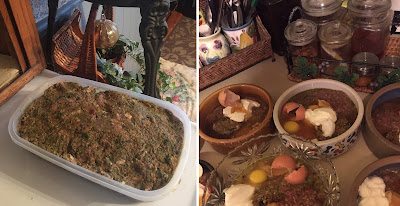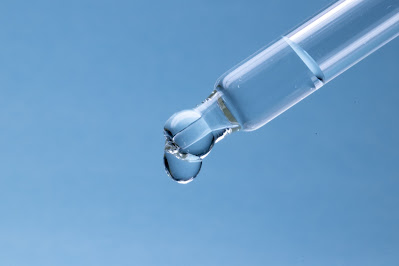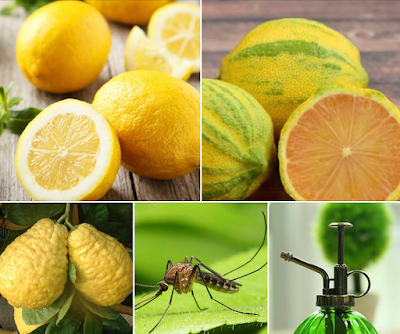Eye Infections and Eye Irritation in Dogs, Cats – Natural, Herbal Treatments, Remedies for Eye Infections and Eye Issues, Including Environmental Allergies
In this article:
- Causes of a Eye Infections
- Signs that Your Dog or Cat's Eye May Be Infected
- Typical Signs of an Eye Infection
- Signs of Pink Eye (Conjunctivitis)
- Contagiousness of Eye Infections
- Important Precautions
- Pink Eye, Highly Contagious, Zooinotic
- Left Untreated or Improperly Treated
- Avoid These Dietary and Personal Care Mistakes
- Natural Treatments for Eye Infections
- Saline Solution Recipe For Cleansing Eyes
- Natural Eye Drops
- Herbal Tea Eye Drop Recipes
- Chamomile
- Green Tea
- Rooibos
- Calendula
- Natural Eye Drop Recipes
- Apple Cider Vinegar
- Colloidal Silver
- Lemon
- Honey
- Oregon Grape Root
- Dietary Support for Eye Health
- Vitamin A
- Antioxidants
- Vitamin C
- Bioflavinoids
- Duration of Treatment
- When To Have The Situation Addressed by a Holistic Wellness Practitioner
1.0 Causes of Eye Infections
A partial list:
- Allergies, i.e.
- Bacteria.
- Debris - foreign object in the eye – e.g. particles of grass, dirt, etc.
- Dog puts his head out a vehicle window when the vehicle is in motion.
- Dry eye.
- Running through tall grasses – a small particle of grass seed may get into a dog or cat’s eye.
- Sand and dirt whipped up and airborne by a strong wind.
- Sticking his head into an animal burrow/hole, etc.
- Trauma to the eye.
- Toxins in the diet and health regimen.
- Viruses.
- Underlying health issues and conditions.
2.0 Signs that Your Dog or Cat's Eye May Be Infected
2.1 Typical Signs of an Eye Infection
Your dog or cat may have one, several or all of the following:
- Thick mucus-like discharge from the inner corner of the eye. Color of the discharge often has a slight green tinge.
- Inflammation, redness of the eye.
- Dog or cat may try to rub the eye frequently with a paw, or against the ground, furniture, etc.
- Squinting.
- Cloudiness of the eye.
- Inability to open the eye partially or completely.
2.2 Signs of Pink Eye (Conjunctivitis)
Pink eye (conjunctivitis) is a little different than other types of eye infections. Symptoms of pink eye include:
The bacterial form of pink eye is the most common form of conjunctivitis.
- Severe itching of the entire eye area.
- Pronounced pink coloration of the dog's eye area.
- Your dog's eye may be severely bloodshot.
- Surrounding eye tissue including the eye-lid will be inflamed.
- Dogs with pink eye may use a paw to scratch and remove discharge from the eyes.
- Your dog may seek out dark places away from direct light and sun light.
- Tear ducts may have increased tear production.
- Increased discharge from the eyes, may collect around the eye area and make it difficult for your dog to blink or open eyes.
3.0 Contagiousness of Eye Infections
3.1 Important Precautions
Eye
infections are very contagious. Take
great care when touching and treating an infected eye:
- Wash your hands thoroughly after touching or treating the infected eye.
- Don’t use the same cotton swab, cloth etc. on both eyes. Use a fresh cotton swab, cloth etc. for each eye.
- Make sure the eye-dropper, ointment or medicine applicator does not touch the eye. If contact with the eye is made wash the tip before reusing or applying to the other eye
3.2 Pink-Eye, Highly Contagious and Zoonotic
The bacterial form of pink eye is the most common form of conjunctivitis.
The viral form of pink eye is an air borne virus, common in the winter when the air is damp and humid.
The third most common cause of pink eye is triggered by environmental allergies. This type of pink eye can cause irritation of the sinus and inflammation of the eye mucus membranes.
Human to dog when the infection is bacteria-based pink eye.
- Dog to dog.
- Insect to dog.
3.3 Left Untreated or Improperly Treated
Eye infections can rapidly worsen and become very serious if left untreated or improperly treated.
On
the first day you may notice a little discharge. By the next day the
infection can be fully developed - dogs and cats with a compromised immune system are most at risk.
If
you think your dog or cat has an eye infection take action ASAP.
3.4 Avoid These Personal Care and Dietary Mistakes
These common items contribute to creating a compromised immune system. Avoid exposing your dog and cat to these items:
- Antibiotics
- Corticosterioids and other conventional medications.
- Stress
- Chemical-based insect and parasite preventatives, treatments.
- Species inappropriate diet and related additives.
- Chemical-based food preservatives, flavoring, colorants, and and other additives.
- Grains and other starchy carbohydrates.
- Exposure to environmental chemicals and toxins, including;
- Chemical-based household cleaners – use pet friendly cleaners instead.
- Herbicides and pesticides – its not an issue if your dog likes to casually munch on grass, but only if it has not been treated with herbicides and pesticides.
- Road salt.
- Vaccines.
- Etc.
4.0 Natural Treatments for Eye Infections
Cleanse your dog or cat’s eye right away, then use a natural eye drop...
4.1 Saline
Solution Recipe for Cleansing Eyes
Recipe:
- ½ cup warm water (distilled water if you have it on hand).
- ½ tsp Himalayan pink salt or sea salt.
- Stir.
- The saline solution is ready for use.
- Dip a clean cotton ball into the saline solution.
- Use the cotton ball to gently cleanse around your cat or dog's eye.
4.2 Natural Eye Drops
These natural eye drops help resolve infection, reduce inflammation and nourish the eyes. Choose one of the eye drop recipes below...
4.2.1 Herbal Tea Eye Drop Recipes
Recipe
- Boil distilled water.
- Place 1 tsp of chamomile flowers into a tea diffuser or [one chamomile tea bag] into a cup.
- Pour the boiled water into the cup.
- Allow the tea to steep and cool until it reaches room temperature.
- Remove the chamomile flowers.
- The eye drops are ready for use.
- Place 2 to 3 drops in the eye two to three times a day until the infection clears, or;
- Place a cooled tea bag against the eye several times a day until the infection clears.
- Brew a new batch of the herbal eye drops daily, until no longer required for use.
.2 Eyebright Eye Drop Recipe
Recipe
- Boil distilled water.
- Place 1 tsp of cut and sifted eyebright into a tea diffuser [or one eyebright tea bag] into a cup.
- Pour the boiled water into the cup.
- Allow the tea to steep and cool until it reaches room temperature.
- Remove the eyebright infuser or tea bag.
- The eye drops are ready for use.
- Place 2 to 3 drops in the eye two to three times a day until the infection clears, or;
- Place a cooled tea bag against the eye several times a day until the infection clears.
- Brew a new batch of the herbal eye drops daily, until no longer required for use.
Learn More About Eyebright
- Go to this article.
.3 Green
Tea Eye Drop Recipe
use water decaffeinated green tea
Recipe
- Boil distilled water.
- Place 1 tsp of loose green tea into a tea diffuser [or one green tea bag] into a cup.
- Pour the boiled water into the cup.
- Allow the tea to steep and cool until it reaches room temperature.
- Remove the loose green tea infuser or tea bag.
- The eye drops are ready for use.
- Place 2 to 3 drops in the eye two to three times a day until the infection clears, or;
- Place a cooled tea bag against the eye several times a day until the infection clears.
- Brew a new batch of the herbal eye drops daily, until no longer required for use.
.4 Rooibos Eye Drop Recipe
Recipe
- Boil distilled water.
- Place 1 tsp of loose rooibos into a tea diffuser [or one rooibos tea bag] into a cup.
- Pour the boiled water into the cup.
- Allow the tea to steep and cool until it reaches room temperature.
- Remove the rooibos infuser or tea bag.
- The eye drops are ready for use.
- Place 2 to 3 drops in the eye two to three times a day until the infection clears, or;
- Place a cooled tea bag against the eye several times a day until the infection clears.
- Brew a new batch of the herbal eye drops daily, until no longer required for use.
Learn More About Rooibos
- Go to this article.
.5 Calendula Plus Herbal Eye Drop Recipe
Preparation
- Boil 1 cup of distilled water. Place 1 tsp of loose (dry or fresh) calendula petals into a tea diffuser or one calendula tea bag into a cup.
- Add at least one of the following herbs (1 tsp each or 1 tea bag each):
- Chamomile
- Eyebright
- Green tea (decaf)
- Pour the boiled water over the tea, and allow to steep for 15 minutes.
- Remove the tea bag, tea leaves or flowers, and allow the brewed tea to cool.
- Add ½ tsp of Himalayan pink salt to the cooled brewed tea, stir to dissolve
- The herbal tea eye drops are ready for use.
Instructions for Use
- Place 2 to 3 drops in the affected eye(s), two to three times a day until the infection clears.
- The tea can also be used to gently wipe and clean around the fur around your dog or cat's eye.
- Brew a new batch of the herbal eye drops daily, until no longer required for use.
Recipe
combine:
- 2 tbs distilled water.
- 4 drops of organic unpasteurized Apple Cider Vinegar.
- Stir well.
- The drops are ready for use.
- Drop 2 to 3 drops in the eye two to three times a day until the infection clears.
Caution:
- Do not use this option if your cat or dog has pink-eye.
Learn More About Apple Cider Vinegar
- Go to this article.
Instructions for Use
- Place 2 to 3 drops in the eye two to three times a day until the infection clears.
Learn About Colloidal Silver
.3 Fresh Lemon Juice, Distilled Water Eye Drop Recipe
Recipe
combine:
- 2 tbs distilled water.
- 4 drops of fresh squeezed lemon juice.
- Stir well.
Instructions for Use
- Drop 2 to 3 drops in the eye two to three times a day until the infection clears.
Caution:
- Do not use this option if your cat or dog has pink-eye.
.4 Raw Honey, Distilled Water Eye Drop Recipe
For use with an infected eye and pink eye
- 2 tbsp distilled water.
- 2 tbsp unpasteurized organic wild flower honey, or manuka honey.
- Stir well.
Instructions for Use
- Drop 2 to 3 drops in the eye two to three times a day until the infection clears.
Learn More About Raw Honey
- Go to this article.
.5 Oregon Grape Root, Distilled Water
For use with an infected eye or pink eye
5.0 Dietary Support For Eye Health
Make sure your dog and cat's diet includes species appropriate eye health supporting food components.
The
following foods help support eye health, speed recovery and immune system function. These items can be used daily to support good health and help avoid future infections.
5.1 Vitamin A
Liver is a primary component of a species appropriate diet for dogs and cats.
- Liver should represent 5% of the animal protein intake.
- If your dog or cat is on a balanced raw diet you already have this covered.
- If your dog or cat isn't on a balanced raw diet add liver to the diet.
- You can gently cook liver in coconut oil or ghee, and add to meals.
- Liver should not exceed 5% of your dog or cat's daily intake of animal protein.
- If your dog or cat has never had raw or cooked liver before start with a very small amount and slowly increase to the 5% daily quota.
For dogs you can also include a small amount (e.g. 10% of the overall diet) of vitamin A rich plant materials in the diet, for example:
- Butternut Squash
- Cantaloupe
- Carrots
- Dark leafy greens (dandelion, spinach, kale)
- Dark leafy lettuce (red leaf lettuce, radicchio, romaine, frizzy lettuce, etc.)
- Parsley (dried or fresh)
- Basil (dried or fresh)
- Papaya
5.2 Antioxidants
for dogs, and cats
Boost your dog and cat's antioxidant intake. These herbal teas can help with that. Allow your dog or cat to self-select the herbal tea she prefers.
Daily Dosage Based on Body Weight:
1-10 lbs:
1 tsp to 1/8 cup, 1 to 3 times per day
1 tsp to 1/8 cup, 1 to 3 times per day
10-20 lbs:
1/4 cup, 1-3 times per day
20-50 lbs:
1/4 to 1 cup, 1- 3 times per day
50-100 lbs:
1/2 to 1 cup, 1x to 3x per day
100+ lbs:
up to 1 cup, 1x to 3x per day
5.3 Vitamin C
Boost your dog's intake of vitamin C
Include oranges or other fresh citrus in your dog’s diet.
For more information on:
- Health benefits.
- Preparation instructions.
- Serving size by body weight.
Go to this article.
Include fresh papaya, tart red cherry or berries to your dog's diet.
for instructions:
For more information on:
- Health benefits.
- Preparation instructions.
- Serving size by body weight.
Go to this article.
5.4 Bioflavonoids
Boost your dogs intake of bioflavinoids.
5.4.1 Vegetables
- Brussels Sprouts
- Broccoli
- Garlic
- *Peppers (sweet colored bell peppers)
Preparation Instructions:
- Find out how to maximize nutrient absorption, serving size, etc:
- Go to this article.
Note:
- *If your dog suffers from an inflammatory condition such as arthritis skip the peppers as the bell pepper plant is a nightshade family plant.
- Nightshades can increase inflammation in the case of an existing inflammatory condition.
5.4.2 Fruit Options
A partial list:
- Blueberries
- Blackberries
- Papaya
- Raspberries
- Mango
- Service berries
- Tart red cherries
Preparation Instructions:
- Preparation instructions, serving size, etc:
- Go to this article.
- Smoothie Recipes for dogs:
- Go to this article.
5.5 Health Check On Your Dog and Cat's Daily Diet
A species appropriate raw (or gently cooked and fresh food diet) is fundamentally important to supporting eye health.
Highly processed food diets (dry, canned, wet food diets) damage the immune system and organ health, resulting in high risk of infections and diseases.
Chronic infections CANNOT be resolved using topical treatment only.
The
underlying cause of the infection MUST be properly addressed. Diet plays an important role in prevention and treatment.
Make
sure your puppy or dog is on a species appropriate raw or gently cooked diet, tailored to their individual situation.
Your kitten and cat also requires a species appropriate raw diet. A species appropriate diet cats is a little different than a dog's [diet]. Learn more here.
6.0 Duration of Eye Infection Treatment
7.0 When
To Have The Situation Addressed by a
Holistic Wellness Practitioner
Holistic Wellness Practitioner
Your dog or
cat's treatment needs to be tailored to suit her personal situation:
- If the situation does not show signs of improvement within 24 to 48 hours, or worsens.
- If the infection is a result of a trauma to the eye.
Holistic Diet, Nutrition, Wellness Services Tailored to Your Individual Dog and Cat
For information about my holistic diet, nutrition, wellness services visit my:
Maintain good health | Address acute and chronic health issues | Pre and post surgery support and recovery
My holistic wellness services are available worldwide via video consultation.
🌎 USA | Canada | UK | Europe | Australia | New Zealand | Asia | South and Central America | Africa | UAE
📱 FaceTime | Facebook | Skype | WhatsApp
Holistic Behavioral Services For Your Dog
For information about my holistic behavioral services visit my:
For dogs of all ages, sizes and breeds
My holistic behavioral services are available locally in-person and worldwide via video session.
🌎 USA | Canada | UK | Europe | Australia | New Zealand | Asia | South and Central America | Africa | UAE
📱 FaceTime | Facebook | Skype | WhatsApp
Affiliations to Companies
✓ None.
✓ I don't sell food or supplements.
✓ I'm not aligned with any companies.
✓ None.
✓ I don't sell food or supplements.
✓ I'm not aligned with any companies.
Article and graphics by Karen Rosenfeld


.jpg)




























